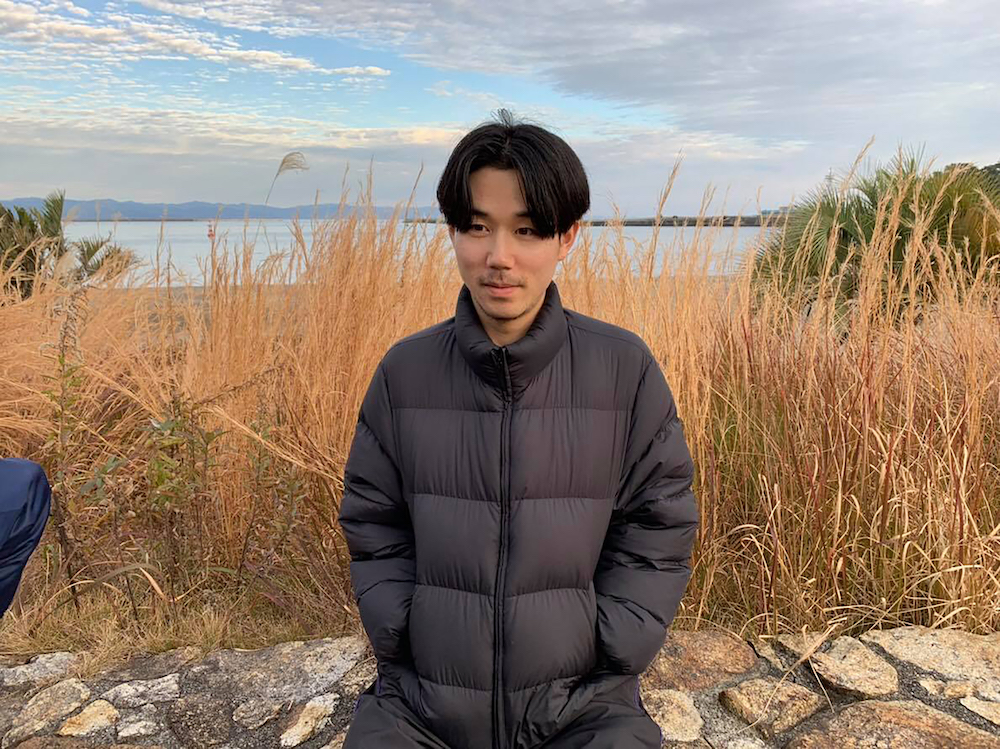Pulling in to the year’s end, November saw some tremendous ambient and experimental pop releases (keeping it vague!). I could easily have gone on too long about Vegpher’s Minutus, a rhythmically-fascinating experimental pop release, and CUUSHE’s lush Waken – but there are already two arty, ambient-y pop releases below. Takuya Yamashita and Masaru Saito’s Series 2001-2020 compilation is great fun too – highly recommended for anyone that wants their ears throttled by all forms of techno.
1. Kazumichi Komatsu, ‘Emboss Star’
(Flau)
Emboss Star ventures into many styles without wholly subjecting itself to any in particular. Hear Kazumichi Komatsu’s most recent release from a certain angle and it could tease sounds that are ambient, pop, folk, R&B, electroacoustic, modern classical, even psychedelic; utilizing pieces of noise, field recordings, glitch and more.
That’s a lot of genres, styles and techniques – especially for just 10 songs and under half an hour of material. And each of those 10 sketches is distinct in its own right, a different experiment to the last and often built out of numerous phases and mood shifts.
But perhaps most impressive is the manner that Komatsu imposes a level of commonality across every sketch. True, all of these tracks are part of an airtight sequential flow, even connected by motifs and themes, but there’s more to their similarities than that. They’re linked by scratches, rumbles, human movements behind the instruments – tied together by Komatsu’s manner of recording.
The result is airy, captivating and pretty to the finest detail. Emboss Star is my favorite of Komatsu’s (many) works so far, a comprehensive summary of his particular brand of experimental music.
2. Ohzora Kimishima, ‘Nui-sō’
(Apollo Sounds)
Famed for buzzing his acoustics across caverns of dense, studio-made static, Ohzora Kimishima is an established folktronica guru. Now, his style includes the volume and conventionality of alt-rock distortion – Nui-sō, his latest EP, is Kimishima’s brashest, most driven work yet.
Most remarkable about Nui-sō isn’t so much the initial shock of the distortion (any that heard teaser single “Yakedo ni Ame” won’t be surprised) but how well it slots into Kimishima’s existing sound. Distortion doesn’t replace Kimishima’s fractured, glitched, incredibly modern folk but intensifies it, and adds fresh thrills.
All the while and despite the extra noise, Kimishima succeeds in retaining his renowned intimacy. For most of Nui-sō, Kimishima’s vocals are so close they could be breathing down your neck; as his non-distorted instrumentals (in total, a majority of Nui-sō) twinkle brilliantly.
Balancing new and old, human and digital, Kimishima’s aesthetic is remarkable – and Nui-sō is another justified reminder of why he’s such a lauded emerging artist.
3. Tamaki Roy, ‘Anyways’
(Space Shower Music)
While a lot of chart hip hop seemingly gets lost in imitation or uniformity, Tamaki Roy continues to do his own thing. Anyways, his latest and fifth release, is entirely self-made: all the songwriting, lyricism and production is done by Roy – and there aren’t any distracting guests.
Roy’s beat-making is, in its heavy reliance on chipmunked vocals and/or chopped soul samples, rooted in turn-of-the-century American hip hop styles. But he also makes that style his own. Compared to someone like Ryohu, whose samples sound predominantly American (and whose Debut was also out last month), Roy samples appear to be mostly Japanese.
Roy then supplements those samples with synthesizers and occasional orchestral interludes. His instrumentals, therefore, mirror the protracted sense of reflection and individuality that dominates his lyrics. Solitary and reminiscent, Roy’s lyricism is heavy in imagery and abstraction, but refreshingly lucid. Skipping through themes like longing, dreaming and cyclicality, Roy pops up with wonderful one-liners (my favorite delightfully compares a slice of burnt toast to a Rothko).
Lightly soulful, very mellow and highly listenable, Anyways is the work of a versatile beatmaker and thoughtful rapper
4. Pop Shinanaide, ‘Great’
(Kingan Records)
Great is the first time that Ayako Kamegai and the mononymous Kawamura have rolled out the piano-led pop of Pop Shinanaide [Pop Never Dies] over a full-length project. A collection of new songs, old recordings and self-covers, it’s a standout 2020 pop release.
Great is so enjoyable largely because it’s so bold. Forefront are Kamegai’s vocals, sung in a different drawl to most chart frontwomen and full of distinct mannerisms, singing lyrics of a certain escapist, magical worldview. Second comes her piano lead, a skilled and seemingly limitless source of lightweight melody.
Then there’s Kawamura’s drumming. Pop Shinanaide enjoys the perks of being a pop unit in which about half the output comes from a drummer. Kawamura is a lightweight, propellant and tight creative force. It’s refreshing to hear pop music in which the drummer isn’t a drum machine or session musician – you can really tell.
5. Punpee, Small Token Pt. 1
(Summit)
Contemporary Japanese hip hop icon Punpee is in the midst releasing a series of compilations of older, previously-less-accessible tracks. Following his July EP, The Sofakingdom (classic school bus joke, right there), Small Token Pt. 1 does what it says on the tin: it’s the first in a set of releases to keep fans tided over before Punpee’s next studio album.
“Curry Shop” was originally one of a limited release of 7” singles linked to a 2018 book release; “Iden & Tity” and “Summer Holiday” released were on a CD mix in 2012; and “Hidari Kame ga Aya Koshimu ga Aya no Kurumado” [“Monochrome Car Window with Cool Light Rain”], is a previously unreleased number produced by Watter.
All four tracks are solid gold pieces of old-school piano hip hop. Vibe-heavy, infectious as it gets, fantastic fun; uncovered gems from one of J-hip hop’s most prolific and consistent artists.









